

Cordyline australis is a beautiful exotic plant that’s worthy of appearing on the most far-flung travel postcards!
Key facts to remember
Name – Cordyline australis
Family – Agavaceae
Type – exotic plant
Height – 10 to 16 feet (3 to 5 meters)
Exposure – very well-lit
Soil – light, well-drained
Hardiness : average (20°F or -7°C) – Foliage : evergreen
Here is all our advice on the proper care to grow a beautiful cordyline:
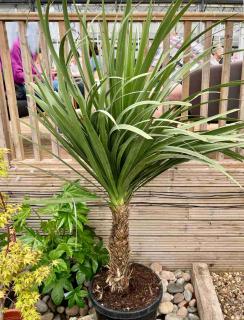 First and foremost, cordyline won’t grow in just any climate. It essentially hates it when the weather gets too cold (colder than 14° or -10°C), and at the same when the soil is wet and moist. Such conditions lead to a hard freeze that the plant cannot survive.
First and foremost, cordyline won’t grow in just any climate. It essentially hates it when the weather gets too cold (colder than 14° or -10°C), and at the same when the soil is wet and moist. Such conditions lead to a hard freeze that the plant cannot survive.
You might say that the hardiness of cordyline is average, and it’ll best be suited to gardens that don’t have too harsh a winter.
Note: if you plant it in a pot, you have the option of bringing it indoors on the coldest days.
As a general rule, cordyline is best planted in fall or spring, spring being better if you’re in an area that gets colder winters.
Choose a sun-bathed area that’s, if possible, sheltered from strong winds.
Preparing for the planting is important because it determines the proper growth of your cordyline.
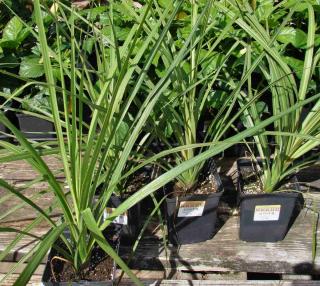 Dig out a hole at least 1.5 to 2 times as big as the container which holds the plant upon purchasing.
Dig out a hole at least 1.5 to 2 times as big as the container which holds the plant upon purchasing.Regular but reasonable watering is nearly mandatory during the first year after planting when the first heat waves hit.
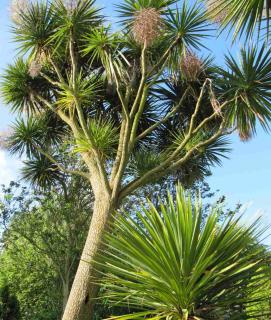 This is most often the time of the year when cordyline grows most.
This is most often the time of the year when cordyline grows most.
In case of drought or of intense heat waves, water regularly but without ever drenching the base: cordyline really hates having too much water.
Watering must be regular but limited, in order to not suffocate the plant’s roots.
You might say that watering every 2 or 3 days is often enough.
Come spring, you can give your plant granulated fertilizer, simply line the base of your cordyline with a few pellets and repeat, if needed, during the summertime.
You can let it grow on its own, without doing anything: it should naturally drop its lower leaves and also send new shoots out from the base.
However, if you prefer to do away with dried-out leaves, remove them once the dry portion reaches the clump.
It’s also possible to keep only 2, 3 or even 4 main stems and remove any new ones that appear from the the base.
Good to know: Avoid, at all costs, beheading your cordyline.
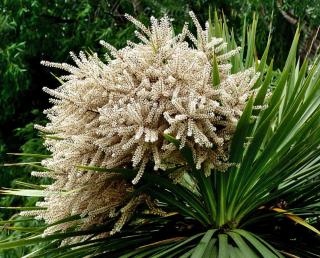 Cordyline generally produces a flower in spring. It’s a phase that tends to exhaust the plant.
Cordyline generally produces a flower in spring. It’s a phase that tends to exhaust the plant.
On indoor plants, this is such a drain on the plant’s resources that it’s preferable to actually cut the floral scape: indoor blooming is nothing like the natural bloom and it won’t add much appeal to your cordyline plant.
However, if you let it bloom and go to seed, you’ll be able to propagate your cordyline from the seeds that form on in the seed pods once the flower is gone.
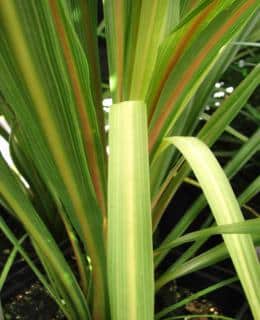 If the cordyline continues to produce new leaves, this is part of its natural cycle. Such plants, even evergreens, lose their leaves to renew them.
If the cordyline continues to produce new leaves, this is part of its natural cycle. Such plants, even evergreens, lose their leaves to renew them.
This phenomenon usually happens in summer, when the plant lacks water.
The tip of each leaf starts drying out: this is the sign that cordyline needs watering.
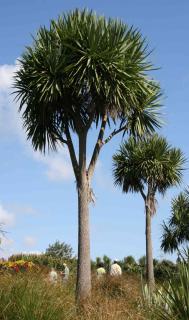 Cordyline is a very beautiful plant that will usher a touch of exotic appeal into your garden. Near a deck, at the poolside, or even in a pot: cordyline will turn your garden into a true postcard-worthy destination!
Cordyline is a very beautiful plant that will usher a touch of exotic appeal into your garden. Near a deck, at the poolside, or even in a pot: cordyline will turn your garden into a true postcard-worthy destination!
All in one aesthetic, resilient and relatively easy to grow, cordyline is one of the most appreciated and often-purchased exotic plants.
Of course, its ornamental foliage is its prime appeal, but many also mention the superb stem that appears as leaves drop when the plant grows taller.
To learn more, read: